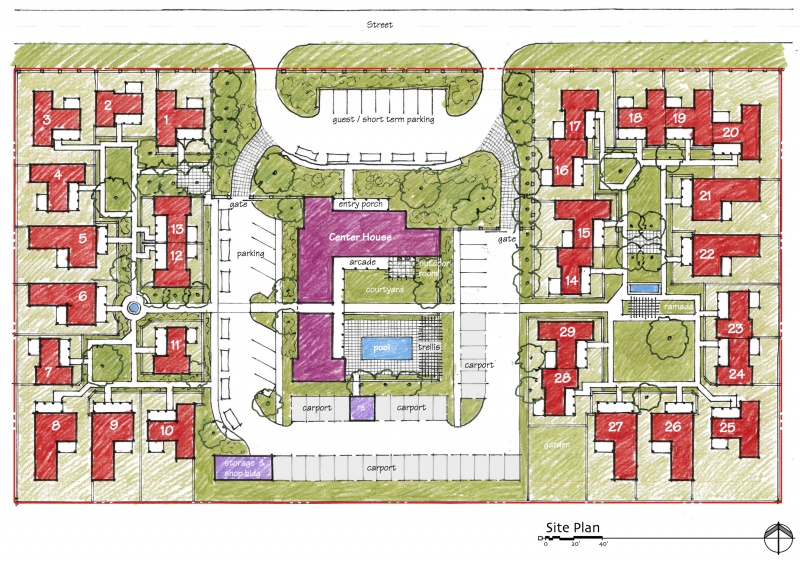
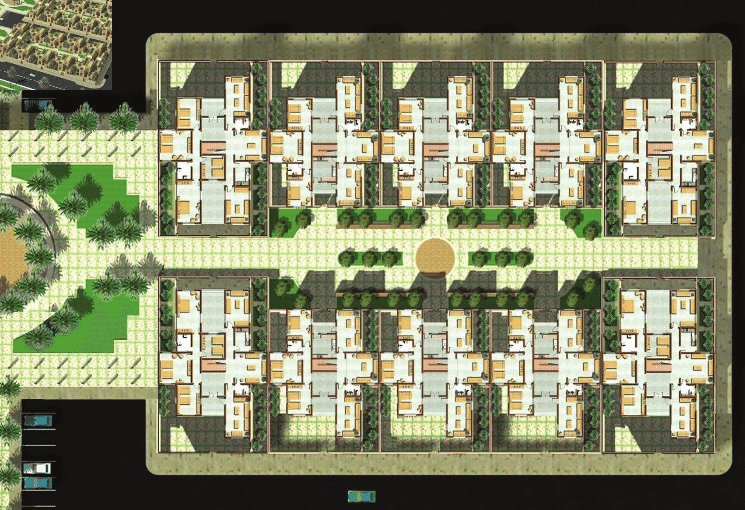
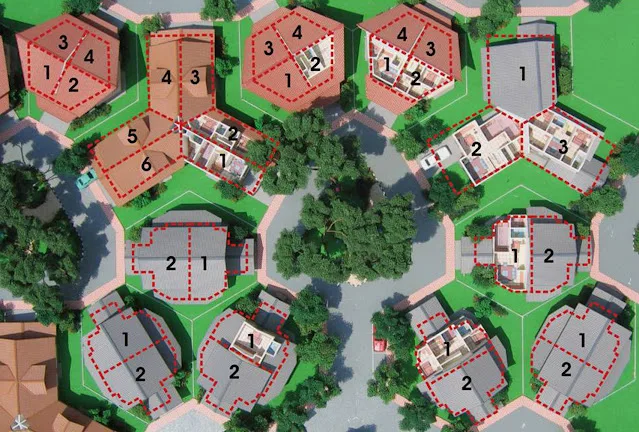
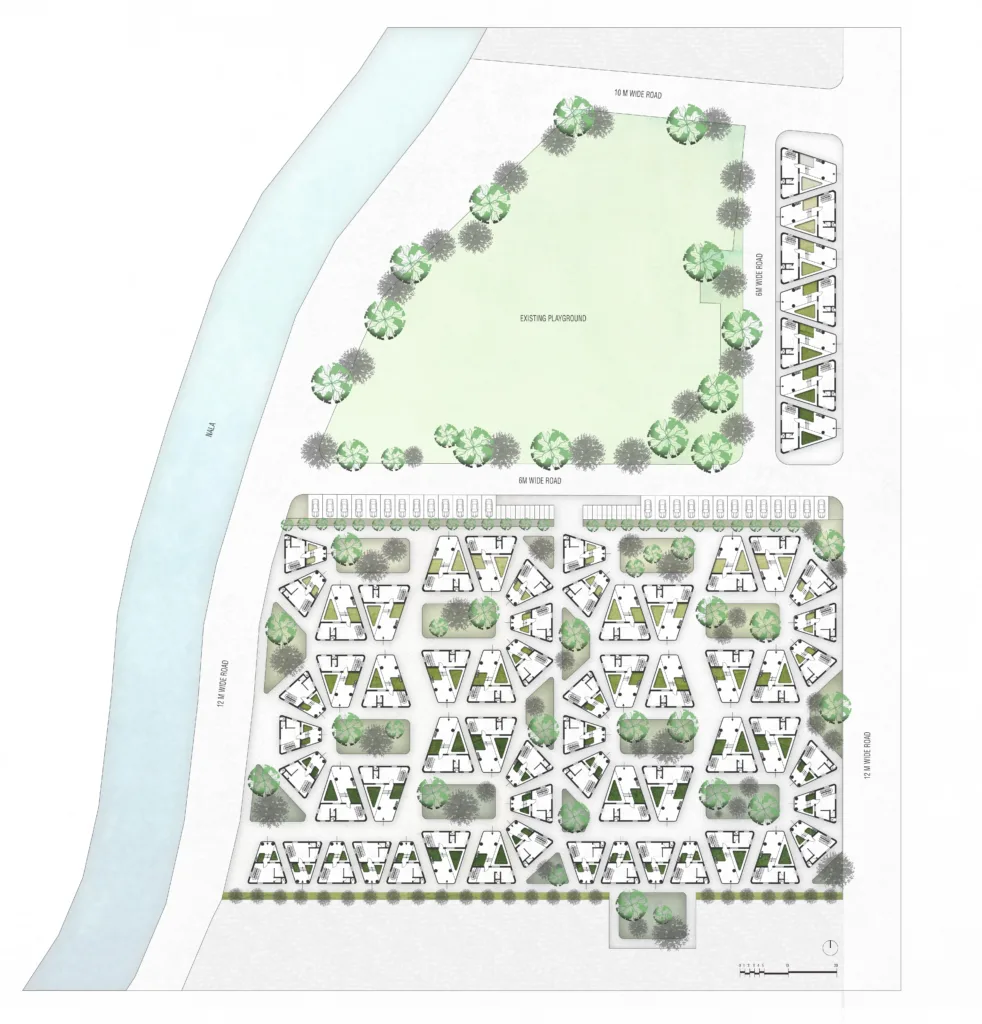
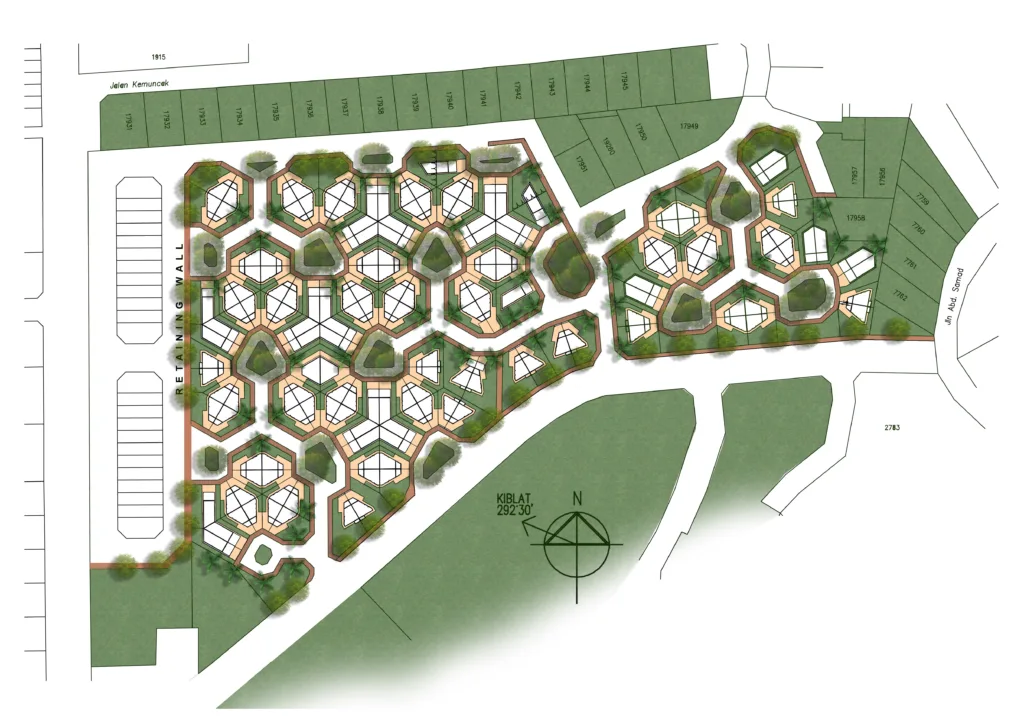

Cluster development often results in lower infrastructure costs, particularly for roads, due to several synergistic factors:
- Concentrated Density: Homes are grouped closer together, reducing the overall length of roads required compared to traditional spread-out layouts.
- Shared Communal Spaces: Centralized open spaces and shared amenities reduce the need for individual access, allowing for shared driveways and fewer roads.
- Efficient Road Design: The use of looped roads and cul-de-sacs minimizes the need for extensive road networks, leading to savings on construction and maintenance.
- Preservation of Natural Features: The compact nature of clusters allows for the preservation of the existing landscape, avoiding the costs and environmental impact of road construction through sensitive areas.
- Reduced Utility Infrastructure: Closer home placement means shorter utility lines for water, sewer, and electricity, which cuts down on installation and long-term service costs.
- Community-Centric Planning: A focus on shared facilities like parks or community centers can be more cost-effective and foster a sense of community.
- Lower Grading Costs: With less land being cleared and graded, the associated costs of earthwork and site preparation are significantly reduced.
- Environmental Considerations: Cluster development preserves more natural land, maintaining the ecology of the area, protecting mature trees, and conserving habitats.
- Navigating Difficult Terrain: By avoiding the need to develop on challenging landscapes, such as rocky areas or steep slopes, cluster development sidesteps the high costs and complexities of such construction.
Overall, cluster development is not just a cost-saving approach but also an environmentally friendly one. It enables a balance between human habitation and the preservation of the natural environment, maintaining the intrinsic value of the land while still accommodating residential needs. This approach requires careful planning and design to ensure that the benefits are fully realized, making consultation with experts in urban planning and environmental science a prudent step in the development process.
